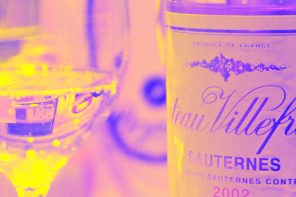When we think Chinese food, one of the first things that come to mind is rice (followed closely by dumplings, scallion pancakes, etc.). So it only makes sense that the country is turning one of their most iconic exports into an alcoholic beverage. Well, they’ve been doing this for centuries and in many different forms, but it recently came to our attention when we saw that yellow rice wine, or huangjiu, is also marketed as “liquid cake.”
Yellow rice wine is over 3,000 years old, and according to Bloomberg, is the fastest growing mass-market alcoholic drink in China. Beer sales are dropping, liquor and wine sales’ growth are slowing, and yellow rice wine is taking over. It’s not particularly expensive – around $12 for a bottle of 5-year old rice wine, and since this drink claims nutritional value, it’s hard not to be intrigued.
This rice wine is strongly tied to Chinese culture, and was traditionally used in medicine because of its warming effects. It’s believed that huangjiu was discovered by accident thousands of years ago in the Shang Dynasty, when farmers produced surplus grain and stored it in damp caves. It fermented and produced a deliciously sweet, fragrant “wine.” Yellow wine digests easily, since there is such a high proportion of nutrition and low proportion of alcohol, and there are even claims that it can fight against aging, improve your appetite (for cake?), prevent cardiovascular disease, and boost your immune system. The fact that you’ll also be drinking alcohol is just the icing on the cake.
Typically, yellow wine is served warmed in small cups, though young people have started drinking it chilled, over ice, with fruit – move over, sangria! There are also several different types of huangjiu, ranging from dry, with less than 1% sugar, to extra-sweet, with 20% sugar content. Surprisingly, this rice wine is not always yellow – it could be orange, white or red, depending on the ingredients used and the duration of fermentation.
The liquor usually contains less than 20% ABV, and is made from water, rice (or sorghum, millet or wheat) and a starter culture. So, why is this grapeless wine also called liquid cake? Some say that it’s because rice wine contains different essential amino acids (as many as 20!), proteins, and carbohydrates. Or is it just because the wine tastes so sweet?
Regardless, you can now have your cake and drink it too.
Photo credit Flickr/JZinn








